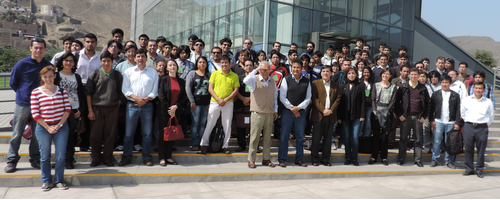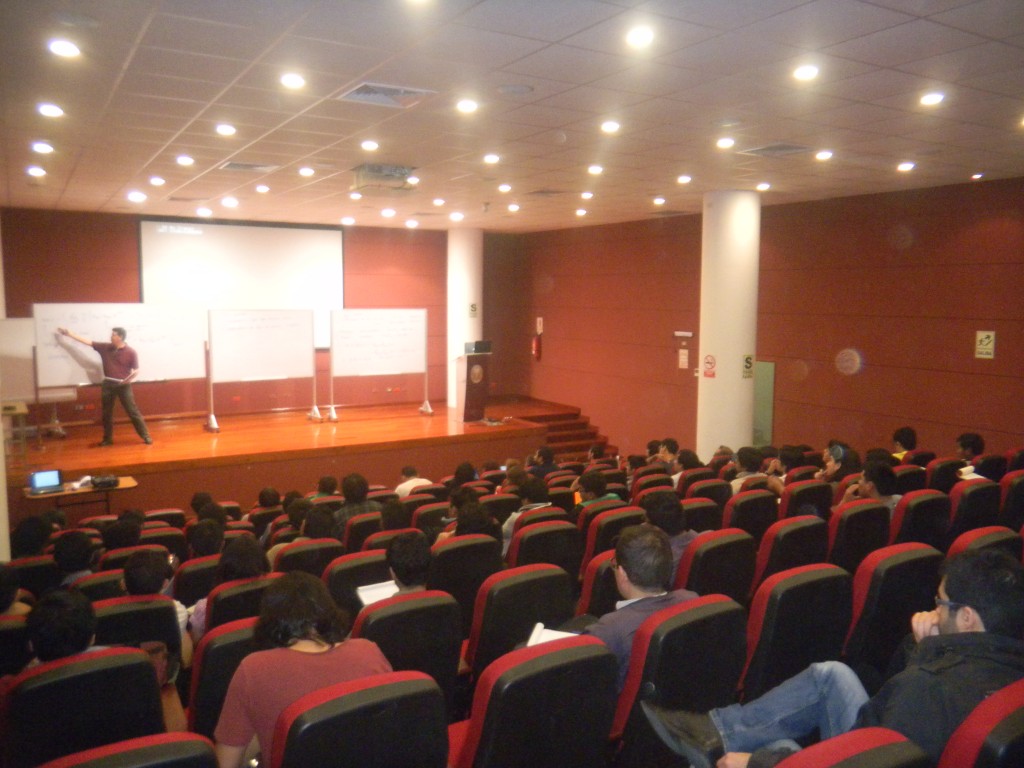ICTP-SAIFR promotes School about High-Energy Physics and Cosmology in Lima
External event aimed to stimulate basic research in Peru and to provide students from across the entire country an overview on Particle Physics and Neutrino Physics
Last week, the National University of Engineering (UNI), in Lima, Peru, hosted the “First Peruvian School in High Energy Physics and Cosmology“. The School, proposed by UNI, was the first external event of ICTP-SAIFR in 2015. Among its main goals were the encouragement of basic research in Peru and inspiring physics students from the country to continue in the area. Invited lectures included Maria Concepción González-García, from Stony Brook University and Sonia Pabán, from the University of Texas.
During the one-week long event – starting June 22 and ending June 26 – topics related to Particle Physics, Cosmology and Neutrino Physics were presented for physics students from across the entire country of Peru, that ranged from advanced undergraduates to doctoral ones. The idea of the School was to provide them a general overview of these areas and also discuss some of the latest results in these fields. Besides the theoretical lessons, students also worked on group projects with the supervision of the lecturers, so that they could further develop the ideas presented in the classes.
Particle Physics – Standard Model and the Higgs Boson
The lectures on Particle Physics were given by ICTP-SAIFR researcher Eduardo Pontón. Throughout the course, Pontón talked about the formulation of the Standard Model and the current situation of the Particle Physics area after the discovery of the Higgs Boson.
“My intention was to talk about basic concepts of the Standard Model and about the Higgs Boson discovery and its consequences,” said Pontón. “I’d like them to understand why it was so difficult and why it took so long to discover this particle; I discussed, for instance, its decay probabilities at http://samedayessays.org/essay-help/ and other characteristics”.
With the discovery of the Higgs Boson in 2012 at the Large Hadron Collider (LHC), the Standard Model was completed – all predicted particles had been identified. Finding new particles, one of the goals of the second phase of the LHC that recently started, would mean the existence of paper editing beyond the Standard Model.
“There is evidence of new physics in the universe,” says Pontón. “In the Standard Model, there is no particle candidate to explain dark matter, for example. Also we have no explanation for the fact that there is a much greater amount of matter than anti-matter, fact known as the Baryon Asymmetry of the Universe (BAU)”.
Neutrinos and Cosmology
Neutrinos were also a topic discussed during the School. These particles interact weakly with matter and are therefore very hard to detect. The study of neutrinos and their oscillations – a neutrino can turn into another type (or flavor) of neutrino along its trajectory through space – can provide information, for instance, on the origin of flavor or on new sources of research paper service violation that could have played a role in the BAU. It can even play a role in understanding how galaxies were formed.
Among the themes of Cosmology the history of the universe was discussed, especially Inflation – a period of the early universe during which space rapidly expanded. The Cosmic Microwave Background, the oldest type of radiation in the universe, was also addressed: its study could reveal aspects about the early universe.


